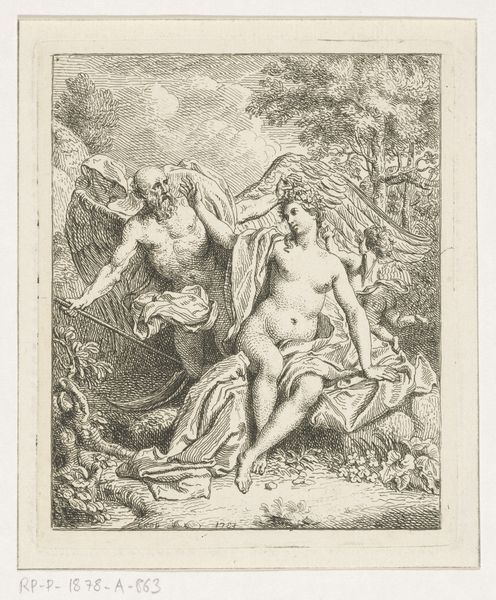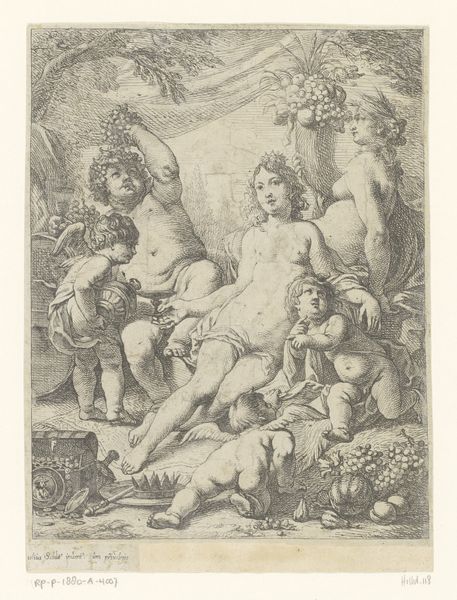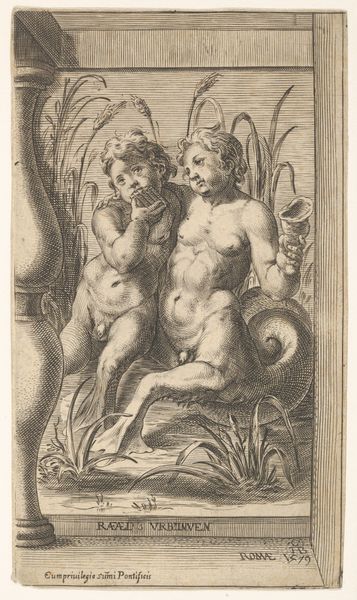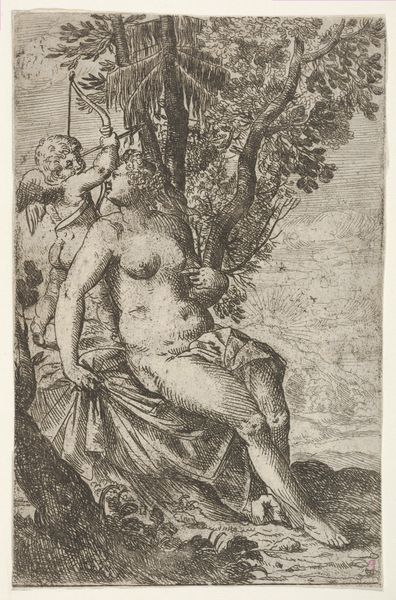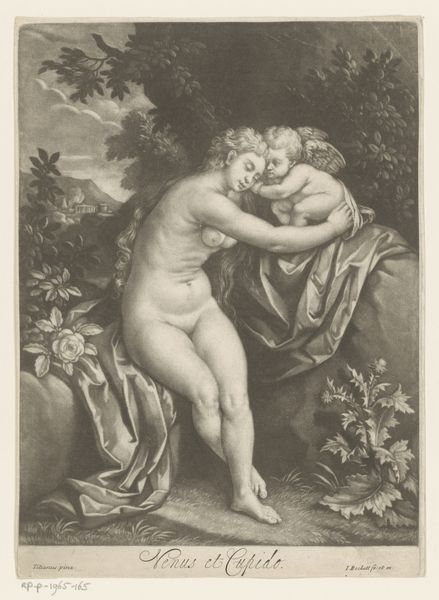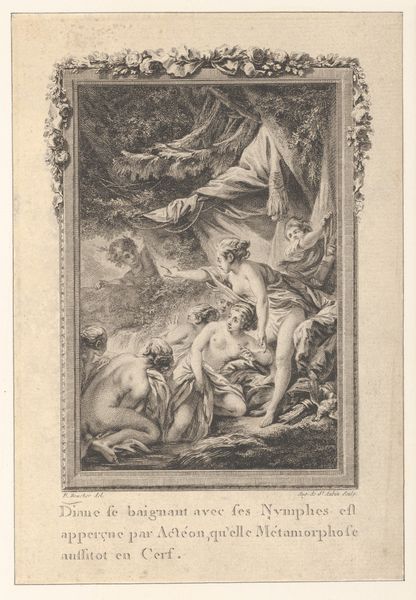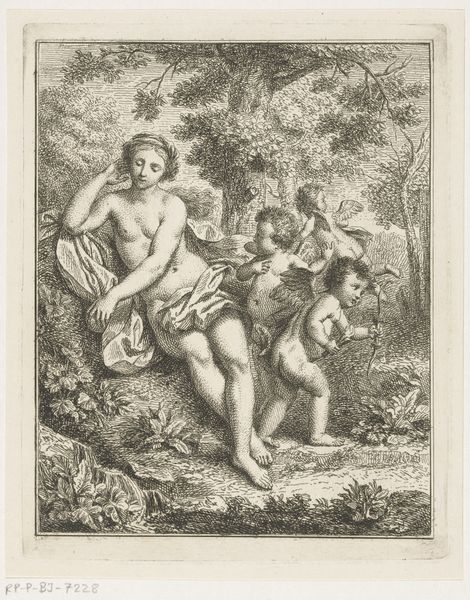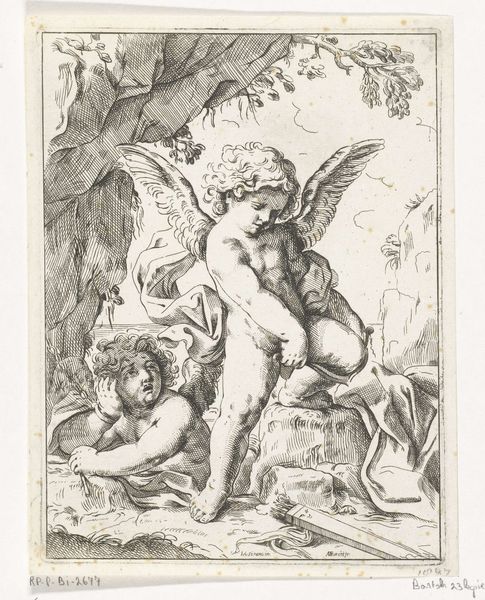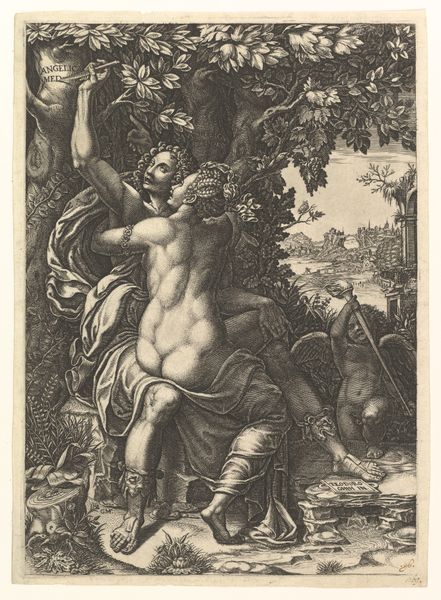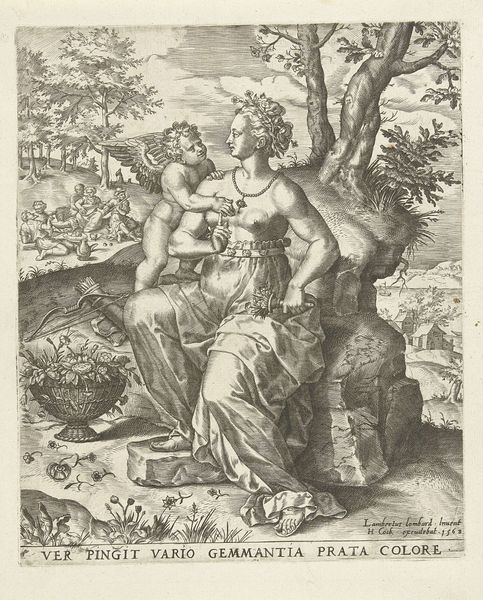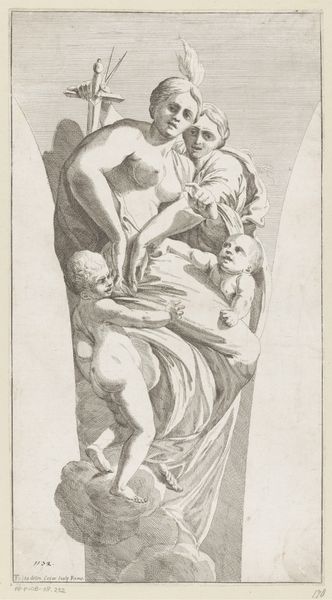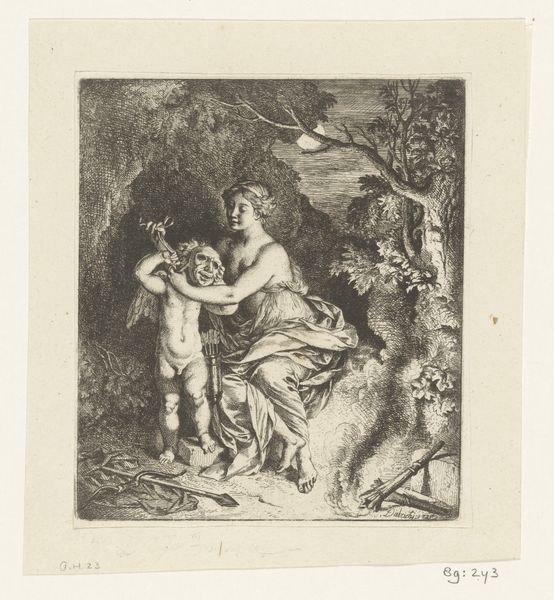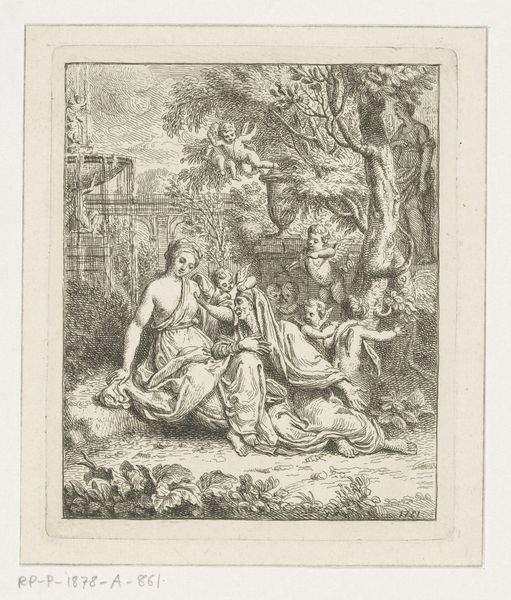
Dimensions: height 185 mm, width 134 mm
Copyright: Rijks Museum: Open Domain
This print, “Two Putti in a Garden,” was made by Pierre Gabriel Berthault in the 18th century. At first glance, the rococo style establishes a sentimental scene in which the putti, or cherubs, evoke themes of love and innocence. Berthault employs a formal structure that is not just decorative; it also communicates complex ideas. The composition, characterized by soft lines and delicate shading, creates a sense of gentle, ethereal beauty. Note how the contrast in light and shadow adds depth, emphasizing the rounded forms of the putti and the lushness of the garden. Consider the way Berthault uses the garden setting. The putti are arranged in a way that blurs the boundary between nature and artifice, raising questions about constructed versus natural environments. Does it challenge fixed meanings or engage with new ways of thinking about perception? The garden becomes a semiotic space where symbols of love, innocence, and folly intersect. This functions not just aesthetically but also as part of a larger cultural and philosophical discourse.
Comments
No comments
Be the first to comment and join the conversation on the ultimate creative platform.
